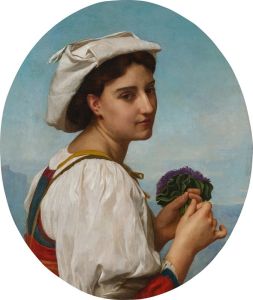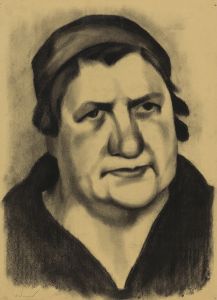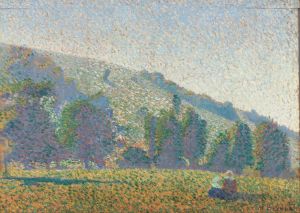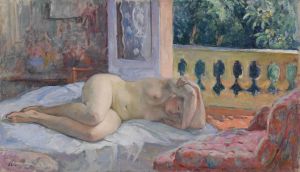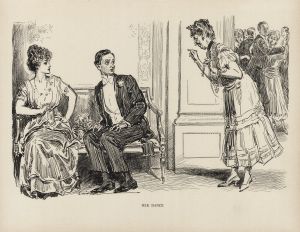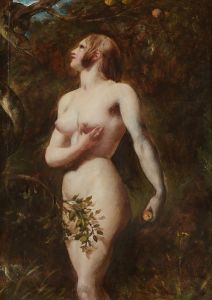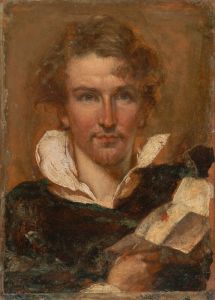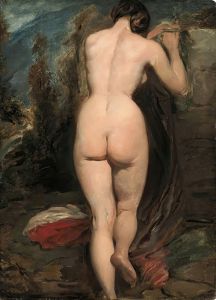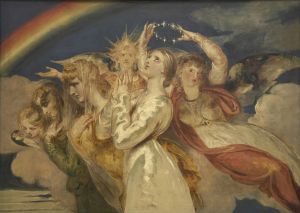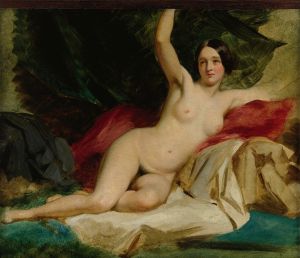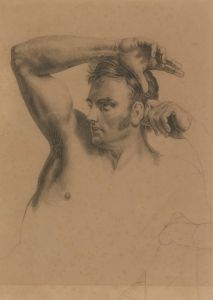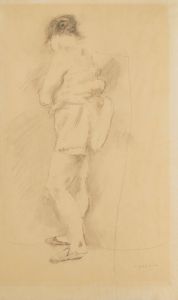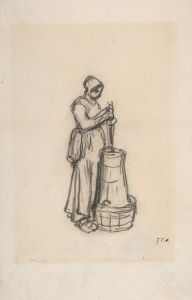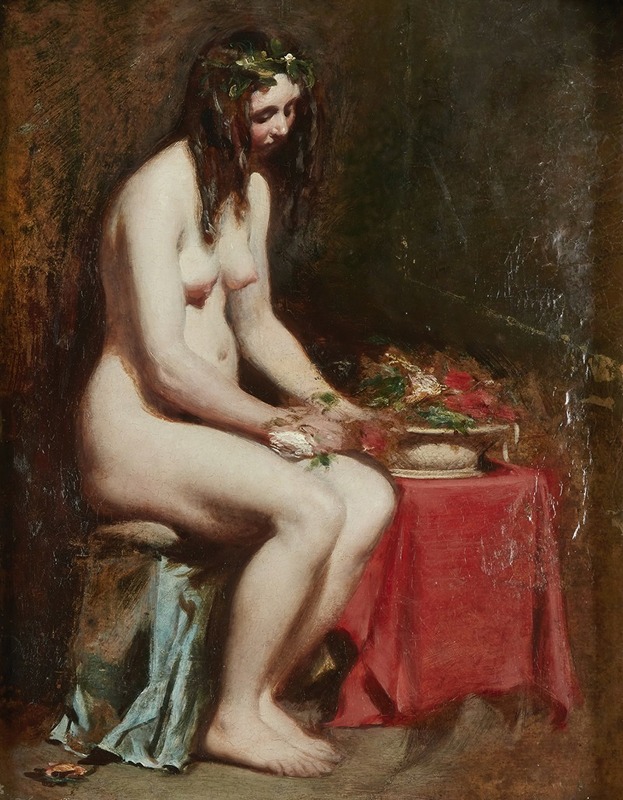
Seated Female Nude with Flowers in her Hair and a Still-Life by her Side
A hand-painted replica of William Etty’s masterpiece Seated Female Nude with Flowers in her Hair and a Still-Life by her Side, meticulously crafted by professional artists to capture the true essence of the original. Each piece is created with museum-quality canvas and rare mineral pigments, carefully painted by experienced artists with delicate brushstrokes and rich, layered colors to perfectly recreate the texture of the original artwork. Unlike machine-printed reproductions, this hand-painted version brings the painting to life, infused with the artist’s emotions and skill in every stroke. Whether for personal collection or home decoration, it instantly elevates the artistic atmosphere of any space.
William Etty was a renowned English artist of the 19th century, celebrated for his ability to depict the human form with a unique blend of realism and romanticism. One of his works, "Seated Female Nude with Flowers in her Hair and a Still-Life by her Side," exemplifies his skill in capturing the delicate interplay of light, texture, and color on the human body.
Etty was born in 1787 in York, England, and developed an early interest in art. He moved to London in 1807 to study at the Royal Academy of Arts, where he was influenced by the works of the Old Masters, particularly the Venetian painters such as Titian and Rubens. Etty's fascination with the human form and his dedication to life drawing became central to his artistic practice.
"Seated Female Nude with Flowers in her Hair and a Still-Life by her Side" is a testament to Etty's mastery of the nude genre, which was both celebrated and controversial during his time. The painting features a female figure seated in a relaxed pose, adorned with flowers in her hair, which adds a touch of natural elegance and softness to the composition. The inclusion of a still-life element beside her further enriches the scene, providing a contrast between the living form and inanimate objects.
Etty's approach to the nude was often characterized by a sensual yet respectful portrayal of the human body. He sought to elevate the genre by infusing it with a sense of dignity and beauty, challenging the prevailing Victorian attitudes towards nudity in art. His works often drew inspiration from classical mythology and literature, which allowed him to explore themes of beauty, love, and mortality.
The painting's composition demonstrates Etty's adept use of color and light to create depth and texture. The warm tones of the skin are complemented by the vibrant hues of the flowers and the subtle shades of the still-life objects. Etty's attention to detail is evident in the delicate rendering of the figure's anatomy and the careful arrangement of the surrounding elements.
Despite his technical prowess, Etty's focus on the nude often attracted criticism from conservative audiences who deemed such subjects inappropriate. Nevertheless, he remained committed to his artistic vision, and his works gradually gained recognition and appreciation. Etty's contributions to the art world were acknowledged when he was elected as a full member of the Royal Academy in 1828.
"Seated Female Nude with Flowers in her Hair and a Still-Life by her Side" reflects Etty's enduring legacy as an artist who challenged conventions and celebrated the beauty of the human form. His works continue to be studied and admired for their artistic merit and their role in shaping the discourse on nudity in art. Today, Etty is remembered as a pivotal figure in the history of British art, whose dedication to his craft and innovative approach to the nude genre left a lasting impact on future generations of artists.





